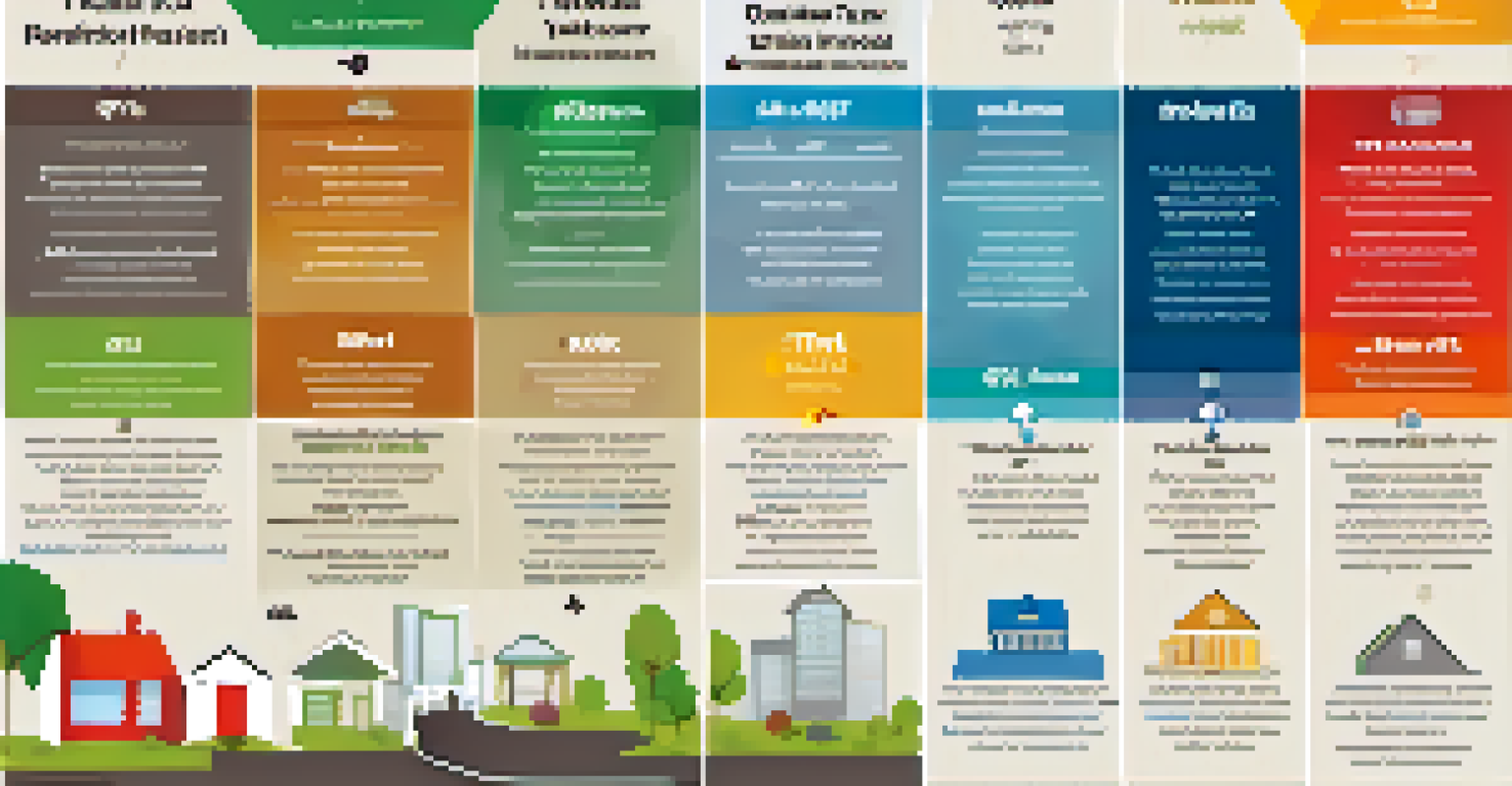How Tax Shelters Work: A Comprehensive Overview

What Are Tax Shelters and Why Do They Exist?
Tax shelters are financial strategies that individuals or businesses use to minimize their taxable income. By utilizing specific investments or accounts, taxpayers can reduce their tax liabilities legally. The primary goal is to keep more of your hard-earned money in your pocket rather than paying it to the government.
The avoidance of taxes is the only intellectual pursuit that still carries any reward.
These shelters can take various forms, such as retirement accounts, real estate investments, and certain types of insurance. Each of these options offers unique benefits and tax advantages that can lead to significant savings over time. Understanding the purpose of tax shelters is crucial for anyone looking to make informed financial decisions.
In essence, tax shelters exist to encourage saving and investment, which can, in turn, stimulate the economy. By providing these options, governments aim to incentivize individuals and businesses to invest in their futures while also creating a more robust financial landscape.
Types of Tax Shelters: An Overview
There are several types of tax shelters, each designed to cater to different financial goals and situations. Some of the most common include retirement accounts like 401(k)s and IRAs, which allow individuals to save for retirement while reducing their current taxable income. These accounts often come with tax-deferred growth, meaning you won’t owe taxes on the earnings until you withdraw the funds.

Another popular option is real estate investment, where individuals can benefit from depreciation and other deductions that lower their taxable income. Moreover, certain investments like municipal bonds are typically exempt from federal taxes, making them an attractive option for higher-income earners looking to preserve their wealth.
Understanding Tax Shelters
Tax shelters are legal strategies that help individuals and businesses minimize their taxable income through specific investments or accounts.
Lastly, insurance products, such as whole life or universal life policies, can also serve as tax shelters. These policies not only provide a death benefit but also accrue cash value that grows tax-deferred, giving policyholders another avenue to protect and grow their wealth while enjoying tax advantages.
How Tax Shelters Reduce Taxable Income
Tax shelters work by allowing taxpayers to reduce their taxable income through various deductions and credits associated with specific investments or accounts. For instance, contributions to retirement accounts are often tax-deductible, which means they lower your taxable income for that year. This not only reduces your current tax bill but also helps in accumulating savings for the future.
In this world, nothing can be said to be certain, except death and taxes.
Additionally, many tax shelters provide opportunities for tax deferral. This means that the taxes on earnings generated from investments in these shelters are postponed until a later date, often when the individual may be in a lower tax bracket. This can lead to substantial savings in the long run and enable more aggressive growth of investments.
Furthermore, some shelters allow for tax-free growth, meaning the investment can grow without being subject to tax until withdrawal. This feature is particularly appealing for long-term investors who want to maximize their returns and minimize their tax obligations.
The Benefits of Using Tax Shelters
Utilizing tax shelters comes with numerous benefits, the most significant being the ability to save on taxes. By reducing your taxable income, you can keep more of your earnings, which can be reinvested or spent as you see fit. This can create a snowball effect, helping you accumulate wealth faster than if you were paying a higher tax rate.
Moreover, tax shelters often encourage long-term financial planning. For example, retirement accounts help individuals focus on saving for the future, promoting a healthier financial mindset. This shift in perspective can lead to better financial decisions and a more secure retirement.
Types of Tax Shelters
Common tax shelters include retirement accounts, real estate investments, and certain insurance products, each offering unique tax advantages.
Lastly, tax shelters can provide a sense of financial security. Knowing that you have a plan in place to protect your wealth and reduce your tax burden can alleviate stress and allow you to focus on other important aspects of life, such as family or career growth.
Common Misconceptions About Tax Shelters
Despite their benefits, tax shelters are often misunderstood. A common misconception is that they are only for the wealthy, but this isn't true. Many tax shelters, such as IRAs or health savings accounts, are accessible to a broad range of income levels and can be beneficial for anyone looking to save on taxes.
Another myth is that tax shelters are illegal or unethical. In reality, they are completely legal and designed to encourage saving and investing. The key is to use them within the guidelines set by tax laws, ensuring compliance while still taking advantage of available benefits.
Finally, some people believe that tax shelters are overly complicated and not worth the effort. While it’s true that some may have intricate rules, many tax shelters are straightforward and can be easily understood. With a little research, anyone can learn how to utilize these tools effectively.
Potential Risks and Downsides of Tax Shelters
While tax shelters offer many advantages, they also come with potential risks and downsides. One major concern is that some shelters can be complex, with specific rules and regulations that must be followed. Misunderstanding these rules can lead to unintended tax consequences, such as penalties or disallowed deductions.
Additionally, some tax shelters may have limitations on access to funds. For example, retirement accounts often impose penalties for early withdrawals, which can restrict your financial flexibility. It’s essential to consider your financial goals and liquidity needs when choosing a tax shelter.
Benefits and Risks
While tax shelters can lead to significant savings and promote long-term financial planning, they also come with complexities and potential penalties.
Lastly, relying too heavily on tax shelters can lead to complacency in financial planning. It’s important to maintain a balanced approach to investing and saving, rather than solely focusing on tax reduction. A comprehensive financial strategy should encompass various aspects of wealth management, not just tax shelters.
Getting Started with Tax Shelters
If you're interested in utilizing tax shelters, the first step is to educate yourself on the various options available. Researching different types of shelters, such as retirement accounts, real estate investments, or insurance products, will help you identify which suits your financial goals best. There are many resources available online, as well as financial advisors who can provide guidance.
Once you have a good understanding, consider your current financial situation and future goals. Setting clear objectives will help you choose the right tax shelters that align with your needs. Whether you’re focused on retirement savings, wealth accumulation, or tax minimization, having a plan is crucial.

Finally, don’t hesitate to seek professional advice. Tax laws can be intricate, and a qualified tax advisor or financial planner can help you navigate the complexities. They can provide personalized recommendations and ensure that you’re making the most of available tax shelters while staying compliant with all regulations.